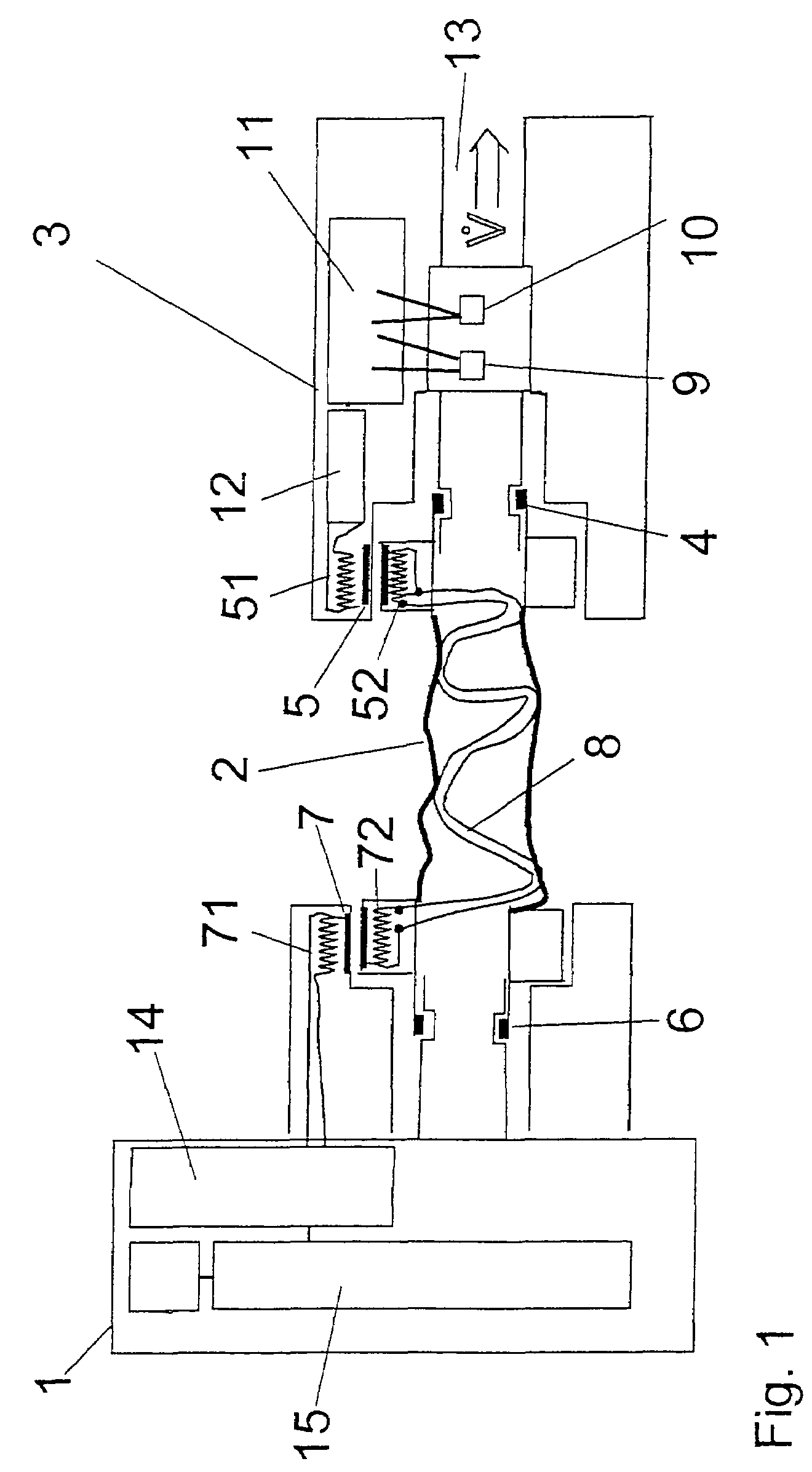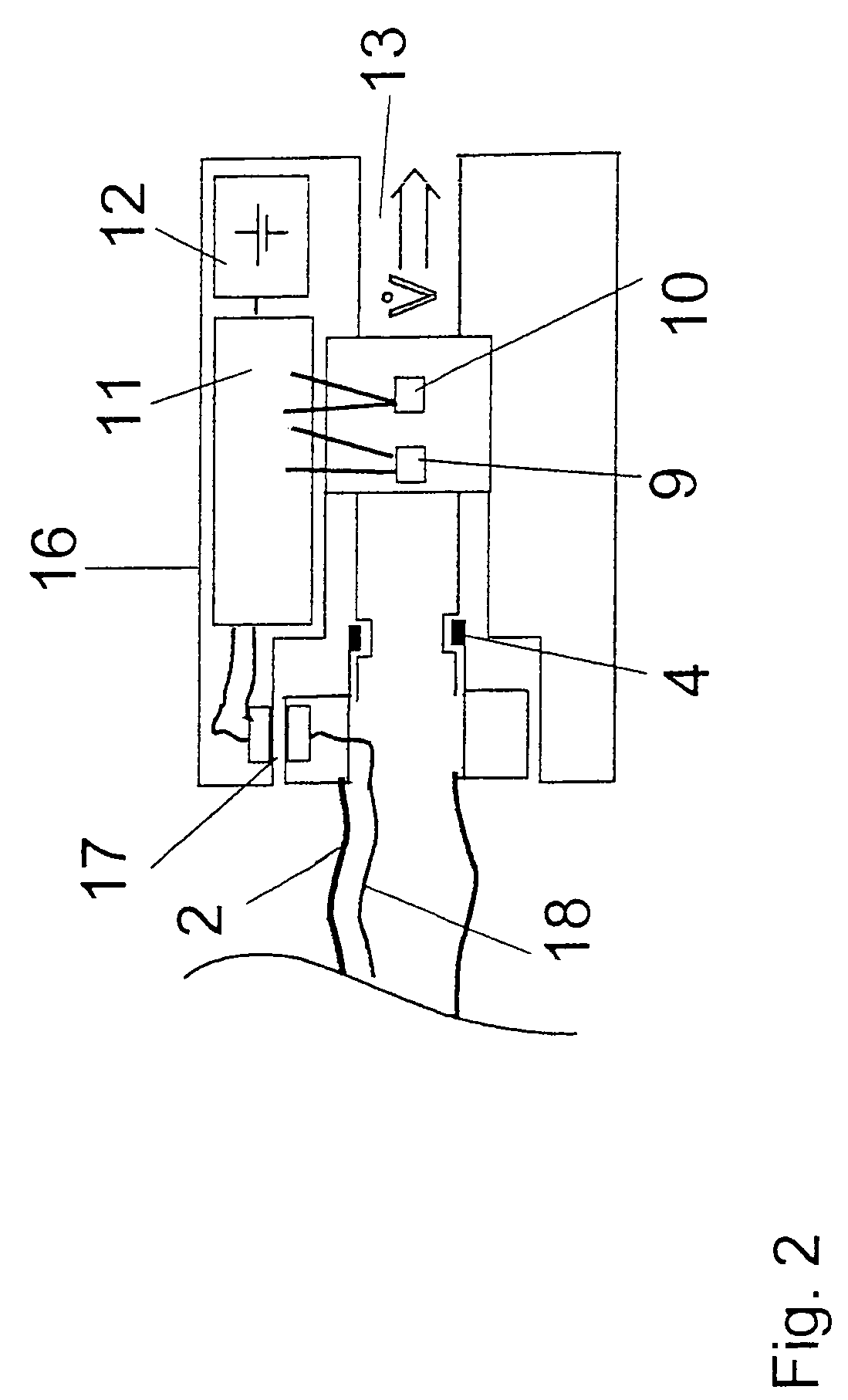Breathing gas tube for a respirator
a technology for respirators and gas tubes, which is applied in the direction of respirators, valves, operating means/releasing devices, etc., can solve the problems of high wear of patch plugs, compromising care procedures performed at patients, and cable connection must be led
- Summary
- Abstract
- Description
- Claims
- Application Information
AI Technical Summary
Benefits of technology
Problems solved by technology
Method used
Image
Examples
Embodiment Construction
[0022]Referring to the drawings in particular, FIG. 1 schematically shows a respirator or ventilator 1, which is connected to a sensor means 3 via a breathing gas tube 2. The breathing gas tube 2 has a first tube coupling 4 with a first inductive interface 5 at the sensor means 3 and a second tube coupling 6 with a second inductive interface 7 at the respirator 1. The first inductive interface 5 is divided into a sensor interface 51 connected to the sensor means 3 and a first tube interface 52 arranged at the breathing gas tube 2. The second inductive interface 7 correspondingly has a second tube interface 72 and a respirator interface 71. The tube interfaces 52, 72 are connected to one another via a two-wire line 8 extending along the breathing gas tube 2. A temperature sensor 9 and a flow sensor 10, which are arranged in the area of the first tube coupling 4 within the breathing gas flow, are located at the sensor means 3.
[0023]An electronic circuit 11 with a microprocessor is con...
PUM
 Login to View More
Login to View More Abstract
Description
Claims
Application Information
 Login to View More
Login to View More - R&D
- Intellectual Property
- Life Sciences
- Materials
- Tech Scout
- Unparalleled Data Quality
- Higher Quality Content
- 60% Fewer Hallucinations
Browse by: Latest US Patents, China's latest patents, Technical Efficacy Thesaurus, Application Domain, Technology Topic, Popular Technical Reports.
© 2025 PatSnap. All rights reserved.Legal|Privacy policy|Modern Slavery Act Transparency Statement|Sitemap|About US| Contact US: help@patsnap.com



